Last week I shared our anticipation and disappointment with unsuccessful efforts to trap a bee swarm. What a difference a week makes.
This past Saturday the lovely ladies (all worker bees are female) were back scouting our trap. After our experience last week we withheld our excitement. Upon checking Saturday evening and again on Sunday afternoon, the scouts were gone with no new residents. Monday revealed an empty trap and Tuesday turned cloudy and cool, not a bee favorite. I questioned the worth of expended effort to check the trap so imagine my surprise at the discovery that a swarm had taken up residence! A quick check in the trap confirmed that a small swarm covering about 2 frames of foundation was busily unpacking the moving boxes. We are now amateur apiarists.
I immediately contacted our beekeeping mentor and established a plan for getting the colony into their permanent accommodations. It turns out that moving bees takes planning. Field bees have an incredible ability to find their way to and from their hive. They do this by orienting themselves to key landmarks; unique trees, buildings, the sun relative to the time of day and other physical characteristics of the local environment. Moving their home within the same neighborhood can lead to disaster. The field bees leave during the day but follow their old landmark cues back to a wrong address. Our beekeeping course introduced the concept of 2 feet of 2 miles. If you are going to move their home further than 2 feet, then move it more than 2 miles away, leave it for a few weeks, then move it back. These major relocations cause the field bees to completely reorient to the landscape and averts problems. It turned out that we needed to get that trap relocated immediately to our waiting bee yard or prepare for the 2 mile plan. Our bee yard was several hundred yards away from the trap location. However, if you move a swarm on the first evening or morning after swarming you can minimize the impact of this type of relocation since the field bees have not fully imprinted on the landscape. So we stapled some #8 1/8 inch hardware cloth over the cover of the swarm trap and moved it directly beside of the 5 frame Nuc box that would become their home. The hardware cloth was removed and the ladies were left for a few days to go about their work of drawing comb on frames with wax foundation. A quick check the next evening revealed only a few dozen bees at the trap area, the rest were returning to the bee yard.
Thursday evening was our first opportunity to get the ladies transferred into the Nuc. Completing the transfer provides us with a chance to feed the bees with sugar syrup (see photo) and pollen protein patties to help accelerate their wax production and population growth. We also wanted to get that trap back out in the field for other potential swarms that might emerge during this period of peak nectar flow. Transferring frames of bees is straightforward. Digging into a colony of bees for your first time is not. Over the past month we’ve taken the classes, read the books and watch countless YouTube videos to prepare for this day. In a word, it was “exhilarating!” After getting over our initial anxiety, PhD and I rolled down our sleeves, donned the veil and dug in. The photos below show some of the adventure. We both enjoyed the action and are looking forward to getting this colony strong and healthy. We may even trap another swarm if our luck and the weather cooperates.
This past Saturday the lovely ladies (all worker bees are female) were back scouting our trap. After our experience last week we withheld our excitement. Upon checking Saturday evening and again on Sunday afternoon, the scouts were gone with no new residents. Monday revealed an empty trap and Tuesday turned cloudy and cool, not a bee favorite. I questioned the worth of expended effort to check the trap so imagine my surprise at the discovery that a swarm had taken up residence! A quick check in the trap confirmed that a small swarm covering about 2 frames of foundation was busily unpacking the moving boxes. We are now amateur apiarists.
I immediately contacted our beekeeping mentor and established a plan for getting the colony into their permanent accommodations. It turns out that moving bees takes planning. Field bees have an incredible ability to find their way to and from their hive. They do this by orienting themselves to key landmarks; unique trees, buildings, the sun relative to the time of day and other physical characteristics of the local environment. Moving their home within the same neighborhood can lead to disaster. The field bees leave during the day but follow their old landmark cues back to a wrong address. Our beekeeping course introduced the concept of 2 feet of 2 miles. If you are going to move their home further than 2 feet, then move it more than 2 miles away, leave it for a few weeks, then move it back. These major relocations cause the field bees to completely reorient to the landscape and averts problems. It turned out that we needed to get that trap relocated immediately to our waiting bee yard or prepare for the 2 mile plan. Our bee yard was several hundred yards away from the trap location. However, if you move a swarm on the first evening or morning after swarming you can minimize the impact of this type of relocation since the field bees have not fully imprinted on the landscape. So we stapled some #8 1/8 inch hardware cloth over the cover of the swarm trap and moved it directly beside of the 5 frame Nuc box that would become their home. The hardware cloth was removed and the ladies were left for a few days to go about their work of drawing comb on frames with wax foundation. A quick check the next evening revealed only a few dozen bees at the trap area, the rest were returning to the bee yard.
Thursday evening was our first opportunity to get the ladies transferred into the Nuc. Completing the transfer provides us with a chance to feed the bees with sugar syrup (see photo) and pollen protein patties to help accelerate their wax production and population growth. We also wanted to get that trap back out in the field for other potential swarms that might emerge during this period of peak nectar flow. Transferring frames of bees is straightforward. Digging into a colony of bees for your first time is not. Over the past month we’ve taken the classes, read the books and watch countless YouTube videos to prepare for this day. In a word, it was “exhilarating!” After getting over our initial anxiety, PhD and I rolled down our sleeves, donned the veil and dug in. The photos below show some of the adventure. We both enjoyed the action and are looking forward to getting this colony strong and healthy. We may even trap another swarm if our luck and the weather cooperates.

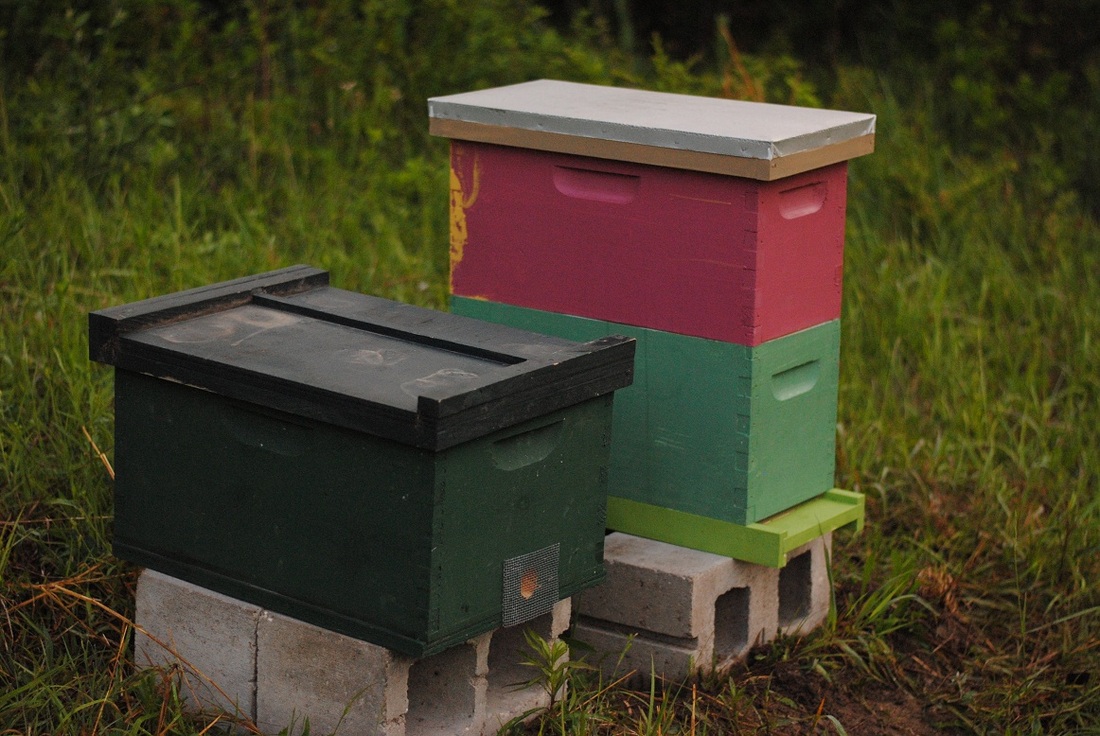
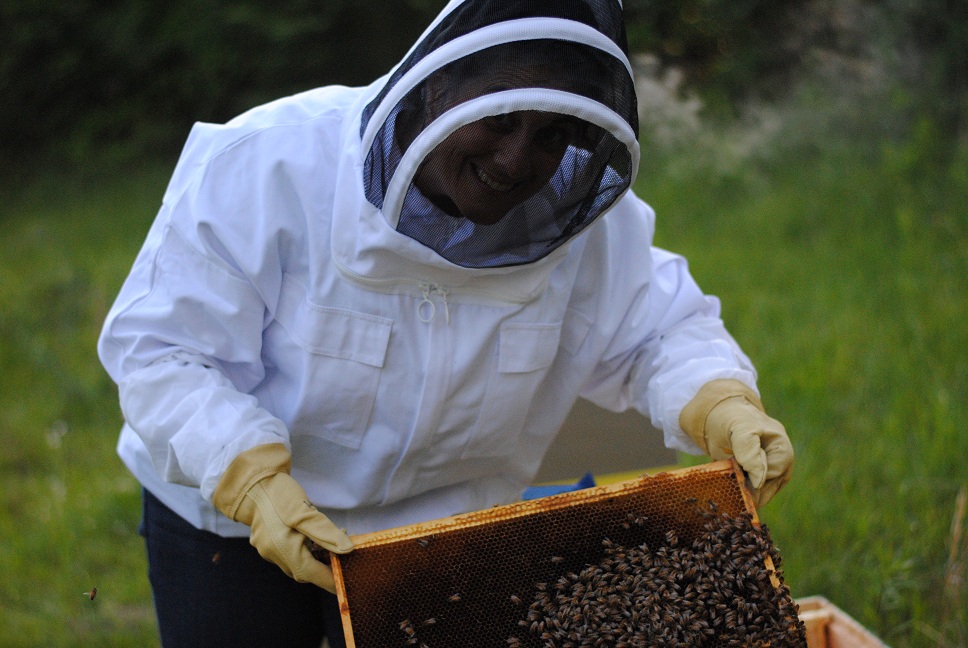
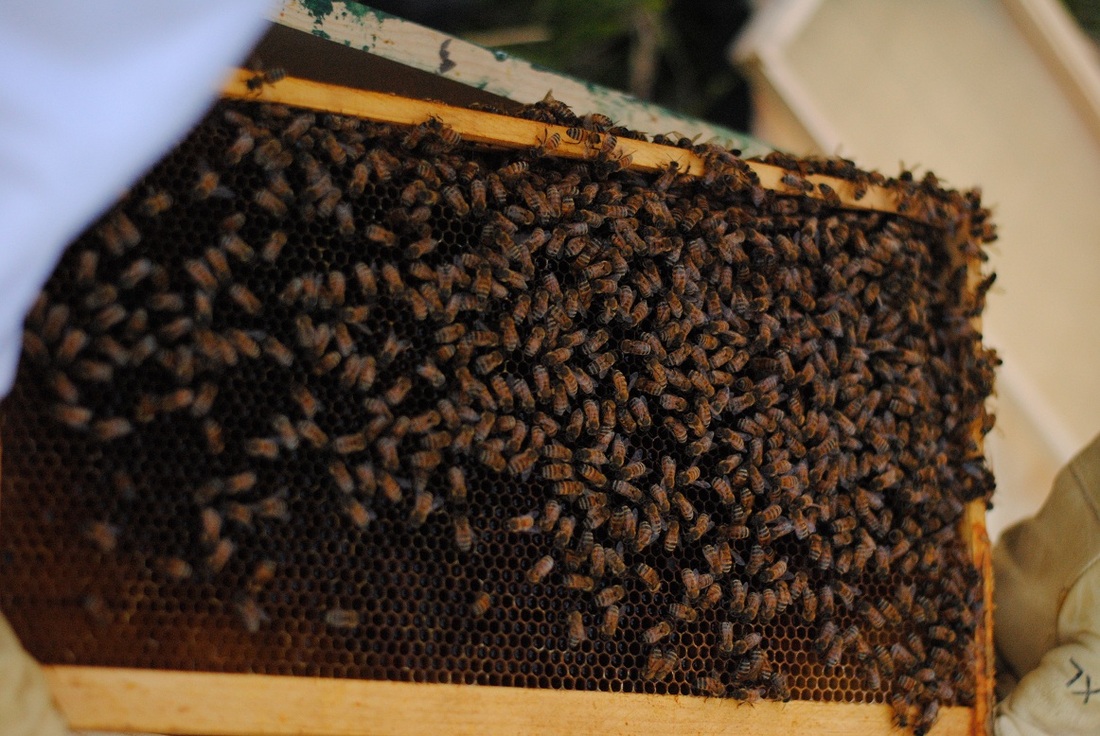
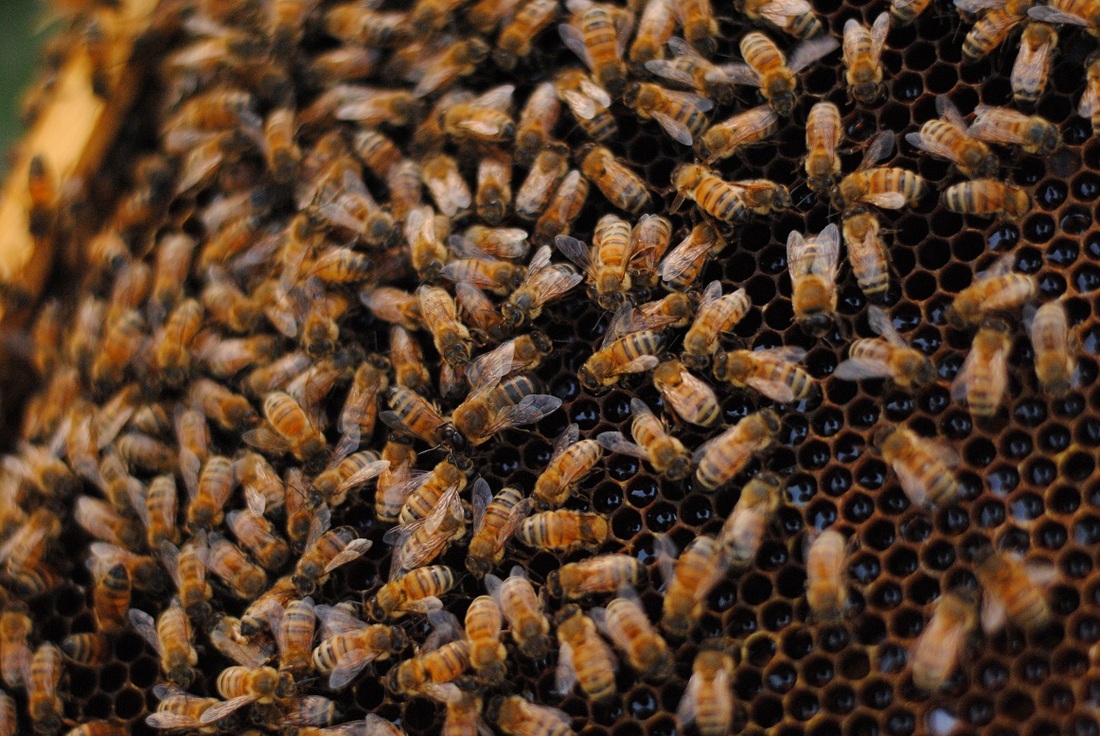
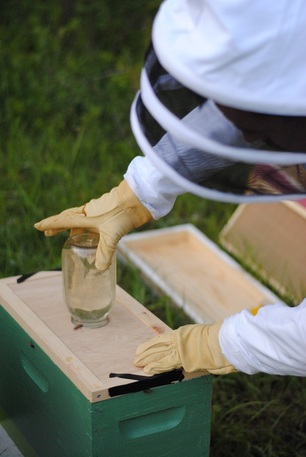

 RSS Feed
RSS Feed